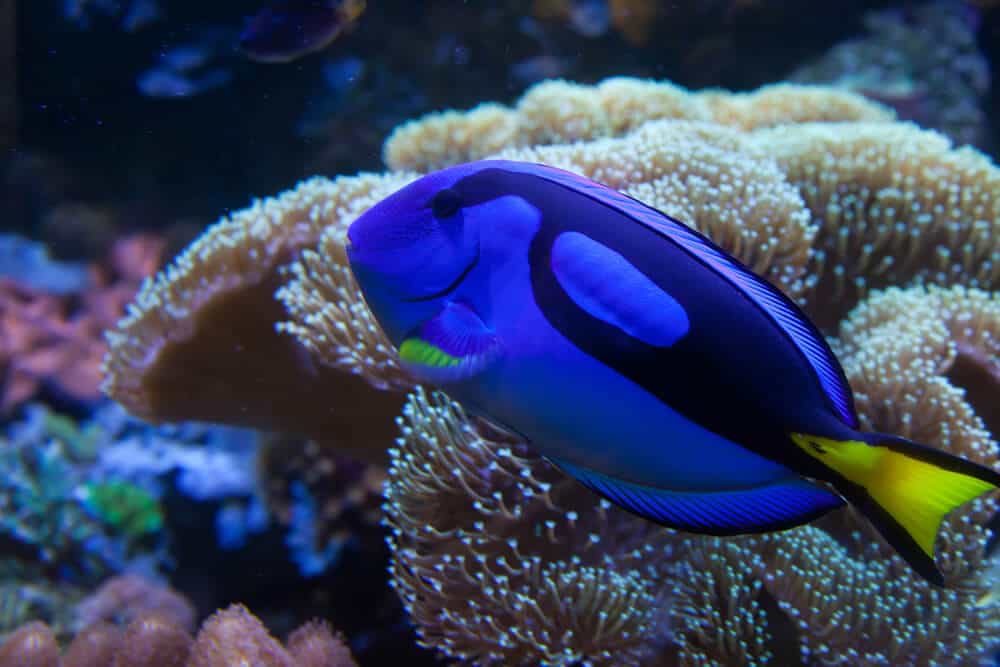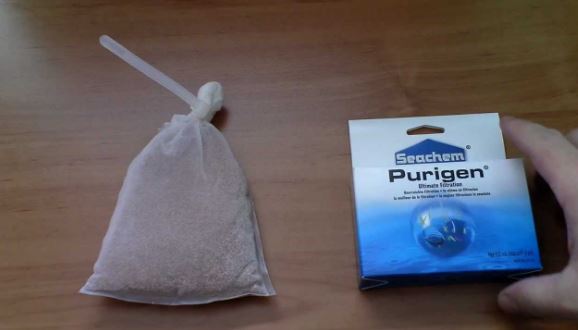
Activated carbon (AC) also called activated charcoal is one of the most popular filtration media for home aquariums.
But they only last for as long as the carbon is still able to absorb impurities.
One it loses its charge, you’ll need to replace it.
So, how long does it last in aquarium filters?
You should change AC every 2 to 4 weeks. If the water is very dirty though, you may have to change it every week instead.
With new filtration methods becoming available, some people wonder whether AC is still needed.
If you’re not sure whether you should add it to your aquarium’s filter, you’ve come to the right place. We’ll answer this and many other questions for you.
Contents
1. What is Activated Carbon?
AC is bituminous charcoal, lignite, or wood that has been treated at very high temperatures to “charge” it. This creates lots of tiny pores to increase the surface area.
Because of this, the AC is able to act like a sponge. Bad odors and trace elements are easily absorbed for as long as the carbon holds its charge.
You should be aware that there are different types of AC that are made using different methods.
For aquariums, you need one that is made from bituminous charcoal and comes in granular form. This type is called a granular activated charcoal, or GAC for short.
2. Do You Need Activated Charcoal In Your Aquarium Filter?
To answer this question, let’s find out what AC does?
Your aquarium water contains lots of dissolved contaminants that need to be removed.
But you should also know that there are some things AC cannot absorb.
You can’t use it for toxin removal, for example, because it cannot absorb
ammonia , nitrite and nitrate .
Read more:
6 Effective Ways to Control Your Tank’s Nitrate Levels
7 Effective Ways to Save Your Fish from Ammonia and Nitrite
AC also cannot absorb heavy metals like iron. If your water has any heavy metals, you should use a water treatment product first.
Sometimes you’ll need to treat sick fish with medication.
AC will absorb most medications, so you should take it out before you start treatment. Once your fish are healthy again, you can safely put the carbon back into your aquarium filter.
3. How Long Does AC Last?
Some people think that it will last for months at a time. Others think it only lasts a few days.
The truth is, how long your AC lasts depends on a lot of different things.
Different brands use different temperatures to charge the carbon, which can make it last longer or shorter than other brands. Usually, it will last between 2 to 4 weeks.
The dirtier your aquarium water, the shorter your AC will last.
This can also happen when you have corals or microalgae in your aquarium, because they constantly release biochemicals into the water. AC will help you get rid of those biochemicals by absorbing them.
Even though AC is one of the most absorbent filter media, the more it absorbs the quicker those tiny pores get blocked.
Eventually, so many of the pores are clogged that it cannot absorb anything anymore.
When this happens, your AC loses its charge.
You should change your AC every 2 to 4 weeks, depending on the bio load in your aquarium. If you have a turtle, for example, you’ll need to change it once a week instead.
4. How to Change Your AC
Your AC needs to be placed into a mesh filter bag to be used.
You should put half a cup of carbon into the bag for every ten gallons of water in your aquarium.
Sometimes you’ll find it has some carbon dust when you take it out of its container. Just to be safe, before putting the AC into your aquarium, you should run it under some running water from a tap.
Next, you should remove the old carbon from your filter system so you can put the new bag in. Your filter should have 3 kinds of media: mechanical, biological, and chemical.
See also:
1/ What Are the Best Mechanical Filter Media?
2/ 4 Best Biological Filter Media
The mechanical media will help make sure that your AC doesn’t have to absorb too much debris too quickly. And the biofilter will absorb some of the organic compounds that can clog your AC media.
That’s why you should place your AC (the chemical media) after these 2. Keep your water flow direction in mind: the AC should be the last media the water flows through. Otherwise, it will lose its charge very quickly.
5. Recommended Products
Are you ready to add an activated carbon filtration media to your aquarium? Take a look at these recommended products.
MarineLand Black Diamond Media Premium Carbon

The MarineLand Black Diamond Media Premium Carbon is the best product available. It’s so good that it works twice as fast as most other ACs. That’s because MarineLand specifically sizes their carbon products to be more efficient in all aquarium filters.
MarineLand charges the carbon at 3,000 degrees to make it more porous. You’ll start seeing results very quickly once you add it to your filtration system.
Small Aquarium Mesh Media Filter Bags

These Small Aquarium Mesh Media Filter Bags are made specifically for AC. They can also be reused, but they come in a 4-pack so you can quickly change your carbon media while washing the current one.
The high flow 500-micron design and drawstring will make sure that your AC doesn’t escape. Water and dissolved contaminants will easily flow through the mesh.
You can use these mesh media filter bags in both freshwater and saltwater aquariums.
Just remember to use granular activated charcoal like the MarineLand Black Diamond Media Premium Carbon. These small aquarium mesh media filter bags will not work with powder activated carbon (PAC), which you shouldn’t use in your aquarium.
If you prefer to use a PAC that comes in pellet form, you can still use these.
6. Related Questions
Still not sure if you should use AC in your aquarium or have more questions? Here are a few more things you should know.
Is It a Must-Have for Aquariums?
Some people believe that AC should be a standard filtration media in most filters. They say that you should only take it out if your aquarium has a high phosphate content or if you’re using fish medication.
Other people say that if you have a biofilter and change your aquarium water regularly, then you don’t need to use AC all the time. I
nstead, they suggest keeping your carbon media for special use. One of the reasons they say so is because it can become expensive to change the AC every 2 to 4 weeks.
There’s actually no right answer. You can decide for yourself whether you should use AC as a constant filter media.
If you feel that your aquarium is healthy and clean, then you can keep it for special circumstances. For example, if you’ve just finished treatment for your fish, AC can be used to absorb the excess medication.
As long as you have proper filter media and change your aquarium water, it’s okay not to use AC all the time.
Are There Any Negatives?
AC doesn’t discriminate what it absorbs.
This means it can also take away some of the trace minerals that your fish and aquarium plants need.
Some fish can easily become very sick very quickly if this happens. One of the most common issues is head and lateral line erosion (HLLE), which can cause your fish to die.
Although it hasn’t been proven, some people believe that carbon dust can also cause HLLE.
This is why we suggest rinsing your AC with properly filtered water before adding it to your aquarium. When it comes to your fish’s health, it’s better to be safe than sorry.
Another problem is that some AC brands haven’t been acid washed.
This means that it can be coated in phosphates that will wash off into your aquarium water. If this happens, you can have a problem with algae blooms.
There’s also a rumor that when AC loses its charge, it starts to de-absorb. What this means is that some people believe once the pores are all clogged, the contaminants start leaking back into the water again.
Can I Recharge It?
A lot of people think that you can recharge your AC once its pores become clogged.
Some will even share step-by-step instructions that tell you that you can do so in your oven.
While it is possible to recharge exhausted AC, you can’t do so yourself.
Just like turning the bituminous charcoal to turn it into AC in the first place, recharging need very high temperatures and pressure. You won’t be able to heat your oven enough or create that pressure level.
If you reuse exhausted carbon after trying to recharge it, you’ll just be adding another biofilter to your aquarium. Remember that AC with most of its pores blocked will start to grow bacteria.






